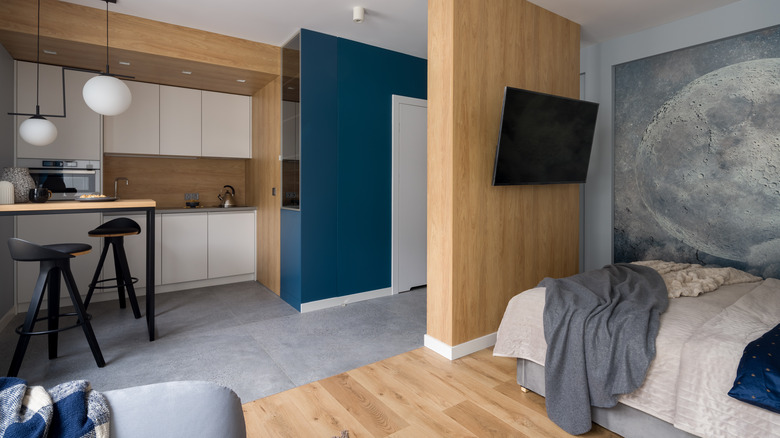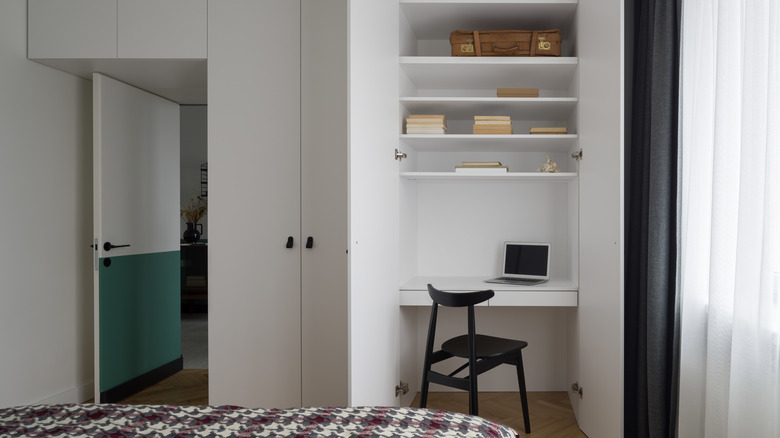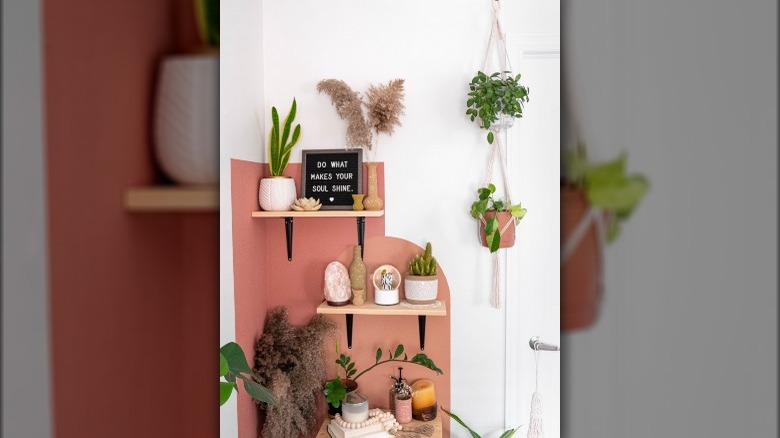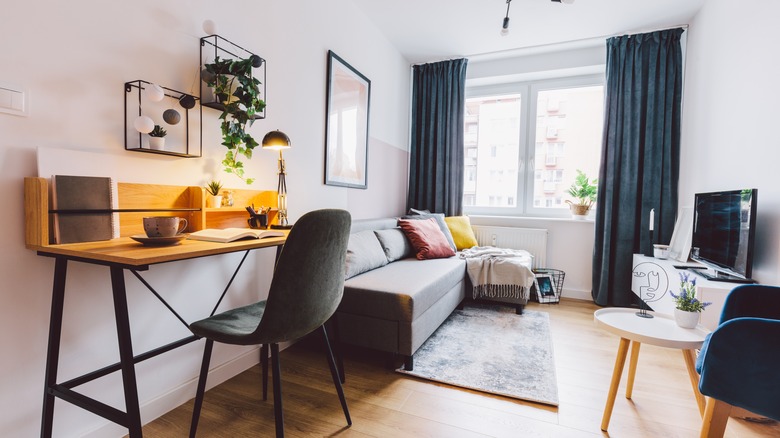A Design Expert Explains How To Create Separate Spaces In A Studio Apartment
Studio apartments are a necessary option for many renters. These apartments offer a singular living space that doesn't include walled-off areas for the bedroom or kitchen. Some studio spaces may even place the bathroom amenities behind a curtain or another divider that isn't completely walled off. Apartment Guide notes that studio apartments often measure smaller than 600 square feet, and Yahoo! Finance reports that Portland is the city with the smallest average studio (at just 435 square feet). Dividing up the space to make it feel less cramped is a must in studio apartments, otherwise, the clutter that accumulates through life can balloon out of control and take over the entire space you call home. But making these segmentations isn't always easy.
In an exclusive interview with House Digest, Interior Designer Aimee Wertepny from Project Interiors offers her expert take on establishing zones within the confines of a studio apartment. "Separating your spaces visually without the use of walls naturally calls for some out-of-the-box solutions," she says, but notes a variety of ways that this can be accomplished with intelligent thinking and subtle cues.
Be creative with your space solutions
Space is always going to be tight in a studio apartment. This is the tradeoff that residents make for central locations in the heart of their communities. However, maximizing functional space in a studio can be done with careful creativity. "To achieve a feeling of separation in my former studio apartment, I added a dream catcher-like wall hanging between the bedroom and living space," Wertepny offers. "In this particular project example (my former studio in Chicago)," she says, "I also ended up removing the closet doors to create a work-from-home space by adding a desk into the alcove. It's a simple way to create a dedicated work space without taking up too much room with a large desk against limited wall space."
The name of the game here is dual-purpose additions. Finding space-saving solutions that can help you achieve multiple functions will give your home more free space while providing the launchpad you require to go about your daily routine.
Be creative with paint
Painting is a powerful psychological feature in home design. "If allowed, I recommend color-blocking with paint in a corner or on one wall as a creative way to add personality into your studio, but also to distinguish the different spaces from one another. I painted my kitchen black to distinguish it from the rest of the apartment — the result is that it feels like its own room," Wertepny notes.
"If you're renting, color-blocking is an easier alternative to full paint jobs because it isn't as much work to paint over a small area when your lease ends," she adds. This is important because major changes like a paint overhaul can lead to costly fixes imposed by your landlord when you move out. In addition, deciding on a color scheme that showcases competing color options will provide a visual contrast throughout the home. Utilizing the color wheel to select a palette that suits your tastes can help with this task.
Furniture tips for studio apartment living
Lastly, the furniture you select for your studio apartment can go a long way in helping to save space in your home. "Sculptural furniture is having a moment, so if you like the trendy museum-like Instagram look or mid-century modern style, keep furniture low to the ground and geometric in shape. If your studio has lower ceilings, the low-slung furniture can also help create the illusion that they are taller than they actually are," Wertepny says.
"In a studio apartment, a lightweight pendant light or adjustable floor lamp that can be easily adjusted and moved around the space is one of the best options to work in a smaller space. Dual-purpose pieces (e.g. a console table that doubles as a record player or a dresser that doubles as a bar) are also key elements of mid-century modern style that are great for saving space," she adds. Furniture also acts to break up the continuity of a room. Experimenting with your placement can give you discreet areas that are sectioned off from one another in a way that compliments the color blocking you've already added to the studio space.



